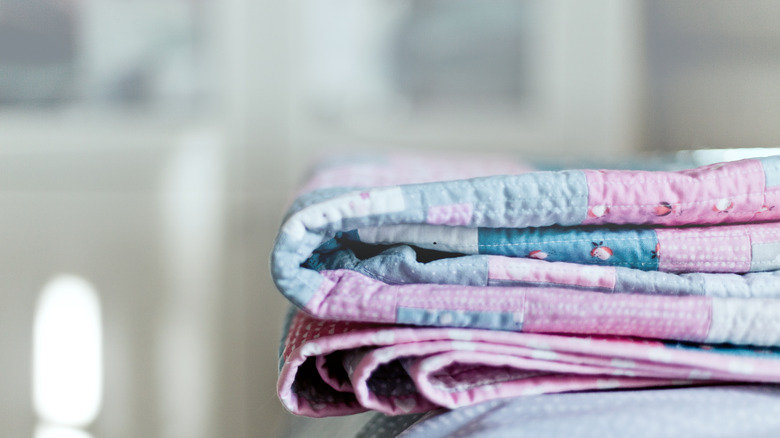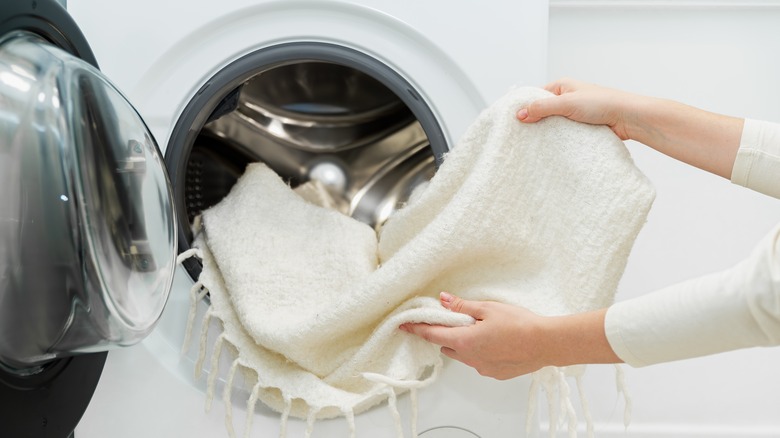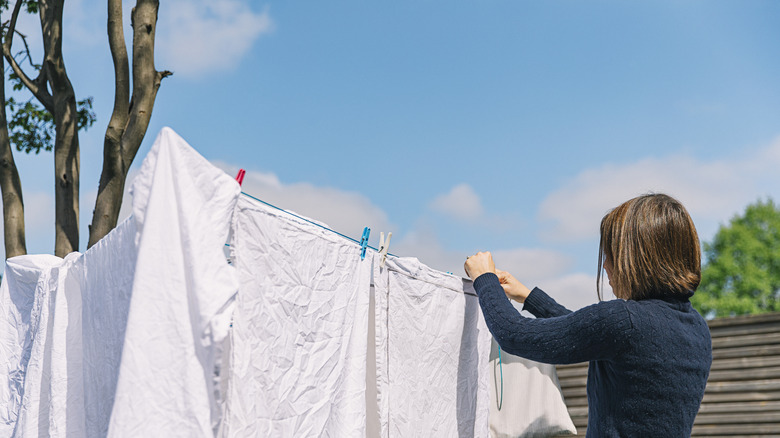Should You Thrift Bedding? How To Find Unique Pieces And Stay Safe In The Process
We may receive a commission on purchases made from links.
Vintage bedding and luxurious linens can be an excellent way to help make where you sleep feel like a dreamy oasis. While new bedding can be found at all price points, many of the most sumptuous and beautiful pieces can cost a pretty penny at retailers. One budget-friendly way to make your bed distinctive and comfy is buying linens secondhand. This not only allows you to incorporate vintage and antique layers, but you can also find bedding that may be cost prohibitive when purchased new. You can find an abundance of stylish bedding in places like thrift stores, flea markets, and garage sales. But many homeowners are concerned over the possible risks of secondhand bedding including contaminants like mold, pests, and mildew. But there are efficient ways to make sure your used linens are nearly as good as new when you bring them into your home, including properly cleaning and disinfecting them before adding them to your bed.
These cleaning and care strategies allow you to fill your linen closet with beautiful pieces you can mix and match to make your bedroom feel more romantic. Great items to seek out include pretty vintage sheets, soft blankets, pillowcases, dust ruffles, and more. Layering them together gives your bedroom a lived-in vibe reinforced by the retro patterns, gentle wear, and overall softness of these items.
Cleaning thrifted bedding
While some thrift stores do wash their items before putting them on the floor, it is wise to do a second thorough wash at home before use, ideally as soon as you bring things indoors. Examine the items for signs of pests, dirt, or damage. Keep the linens in a plastic bag and away from other clothing and linens until washed. This can help prevent the spread of pests like bed bugs, moths, and spiders that may have made their home in thrifted linens. Use hot water if possible and a strong detergent like OxiClean Odor Blasters that can tackle bacteria and remedy minor staining and marks. For whitening and brightening, you may also want to add ⅓ to ¼ a cup of distilled white vinegar, which can help soften your bed sheets to sleep more peacefully.
For items that can't be machine washed, allow them to soak overnight in warm water and a gentle detergent, changing out the water a couple of times while submerged. Even after thorough cleaning some linens may need extra treatment to look their best, especially if they are white and have yellowed with age. This can be remedied by soaking the items in a vinegar or Borax solution to increase brightness. For bulkier items like throw pillows, remove any covers and wash them thoroughly, then run the entire cushion through a drying cycle unless prohibited on the care label. If the cover is attached, you may have to machine wash the entire pillow to get it completely clean.
Drying and deodorizing secondhand linens
The other danger of secondhand bedding could be mold or mildew that has accrued while the items were at the store or in storage before donation. These will likely be knocked out by a hot wash cycle, but be careful to avoid breathing in contaminants while handling. After washing, keeping the fabrics mold or mildew free depends largely on drying them properly and thoroughly on high heat if allowed.
You may also want to dry items in the sun on a line outside, where the open air and UV rays can help eliminate both moisture and any unfortunate smells like mustiness, cigarette smoke, or pet odors. For particularly tenacious odors, try storing the item with a scented dryer sheet for a few days or using an enzyme-based cleaner, which is especially great for removing lingering pet smells after washing. You can also use some of the same extra steps you take when washing thrifted clothing: Sprinkle thrifted fabric items with baking soda before the wash cycle to banish scents.


